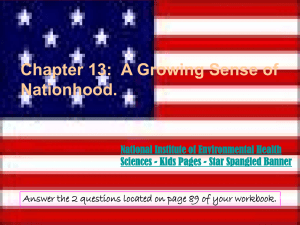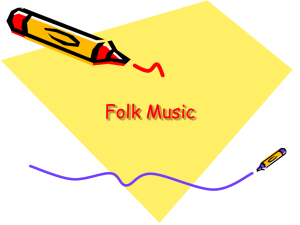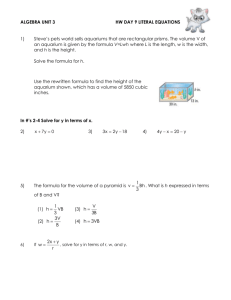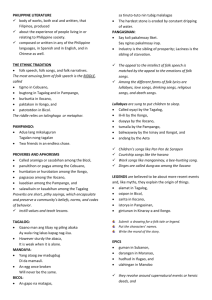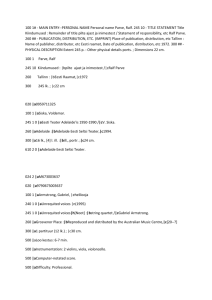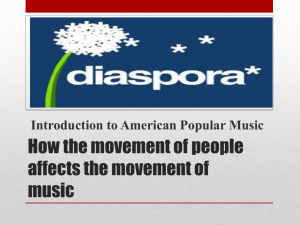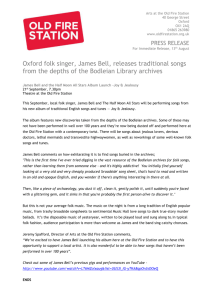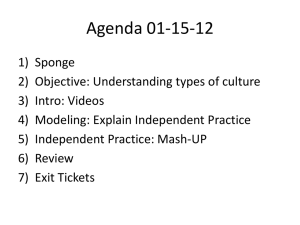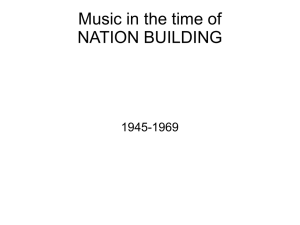Chapter 13.2
advertisement
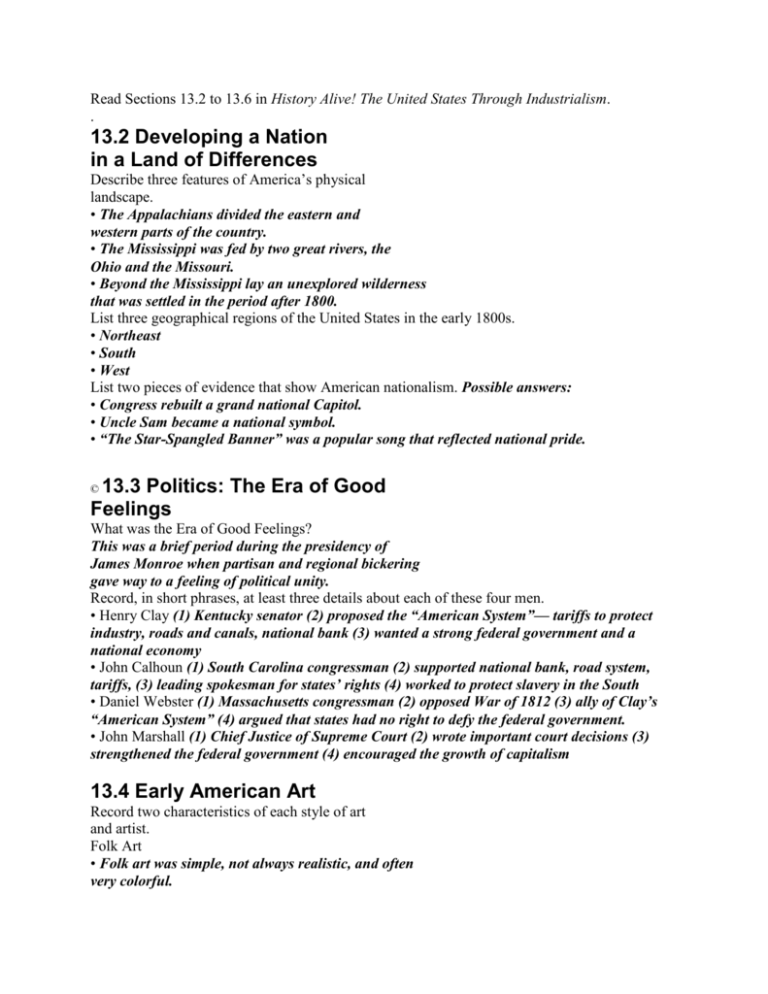
Read Sections 13.2 to 13.6 in History Alive! The United States Through Industrialism. . 13.2 Developing a Nation in a Land of Differences Describe three features of America’s physical landscape. • The Appalachians divided the eastern and western parts of the country. • The Mississippi was fed by two great rivers, the Ohio and the Missouri. • Beyond the Mississippi lay an unexplored wilderness that was settled in the period after 1800. List three geographical regions of the United States in the early 1800s. • Northeast • South • West List two pieces of evidence that show American nationalism. Possible answers: • Congress rebuilt a grand national Capitol. • Uncle Sam became a national symbol. • “The Star-Spangled Banner” was a popular song that reflected national pride. GUIDE TO READING NOTES 13 13.3 Politics: The Era of Good Feelings © What was the Era of Good Feelings? This was a brief period during the presidency of James Monroe when partisan and regional bickering gave way to a feeling of political unity. Record, in short phrases, at least three details about each of these four men. • Henry Clay (1) Kentucky senator (2) proposed the “American System”— tariffs to protect industry, roads and canals, national bank (3) wanted a strong federal government and a national economy • John Calhoun (1) South Carolina congressman (2) supported national bank, road system, tariffs, (3) leading spokesman for states’ rights (4) worked to protect slavery in the South • Daniel Webster (1) Massachusetts congressman (2) opposed War of 1812 (3) ally of Clay’s “American System” (4) argued that states had no right to defy the federal government. • John Marshall (1) Chief Justice of Supreme Court (2) wrote important court decisions (3) strengthened the federal government (4) encouraged the growth of capitalism 13.4 Early American Art Record two characteristics of each style of art and artist. Folk Art • Folk art was simple, not always realistic, and often very colorful. • Ordinary, untrained people created this art in everyday objects, signs, and murals. The Hudson River School • This school of painting celebrated America’s natural wonders rather than people. • The landscapes were idealized, often filled with a glorious, almost religious light. John Audubon • Audubon created finely detailed paintings of birds. • His paintings were highly realistic, the work of a naturalist. George Catlin • Catlin recorded life and events on the western frontier. • He portrayed Native Americans and their lives with great dignity and respect. GUIDE TO READING NOTES 13 13.5 Early American Music List five types of music popular in the United States from 1812 to 1850. • Orchestras played classical music. • There was dance music for both formal dances, such as the cotillion, and common square dances. • There was a growing interest in popular and patriotic songs. • Black slaves sang spirituals and folk songs. • White composers wrote minstrel songs that mimicked black music. 13.6 Early American Literature What did these four authors write? How did their work reflect American themes or settings? • Washington Irving Irving’s stories like “Rip Van Winkle” and “The Legend of Sleepy Hollow” were set in the wilds of upstate New York. • James Fenimore Cooper Cooper’s novels, including “The Last of the Mohicans” and “The Pioneers” described frontier life and Native Americans to the rest of the world. • Davy Crockett Crockett spun tall tales and wrote about his own life and adventures on the frontier. His backwoods speech and rough humor had a distinct American flavor. • Henry Wadsworth Longfellow Longfellow wrote poetry that celebrated America’s growing importance in the world.
